A professional cutter always has several types of scissors in his arsenal. Among them, the tailor's type is a must. Their appearance and design allow not only to cut, but also to work professionally with fabrics to improve the quality of the product. The latest versions of hobby tools in the form of sewing can work with a wide range of fabrics, designed for different cutting needs.
How to distinguish from ordinary scissors
Tailor's scissors can be easily distinguished from ordinary office scissors by a number of features:
- the cutting version has a sharp blade that can cut not only thin fabrics, but also thicker ones at any angle and even with the tip;
- due to an insufficient sharpening angle, ordinary office tools will “chew” the fabric, while specialized ones will easily cope with the task;
- The professional version is capable of cutting even fur with thick pile.
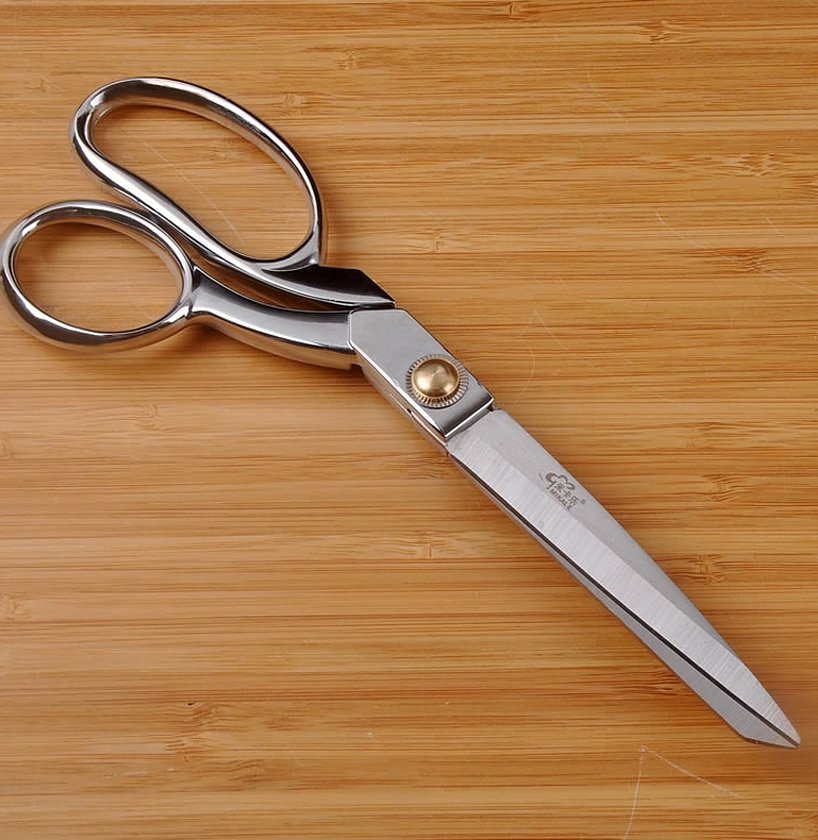
External differences between the tailor's version and the office version:
- acute sharpening angle on a special machine;
- all-metal body;
- the presence of a screw for fixing the blade;
- handle configuration in the form of rings for easy holding: large and small ring of different colors;
- made from a special grade of steel, which is heavier than regular steel;
- the blades are longer and can reach 45 cm;
- the ends are not cut at an angle of 90°;
- pointed;
- are made of high quality steel.
Important! The price of sewing tools is higher than that of ordinary ones, since higher quality materials are used in their production, and the processing takes more time.
The main functions that sewing scissors perform are:
- cutting and cutting of materials;
- thread cutting;
- processing of sections;
- edge alignment;
- cutting loops;
- formation of notches.
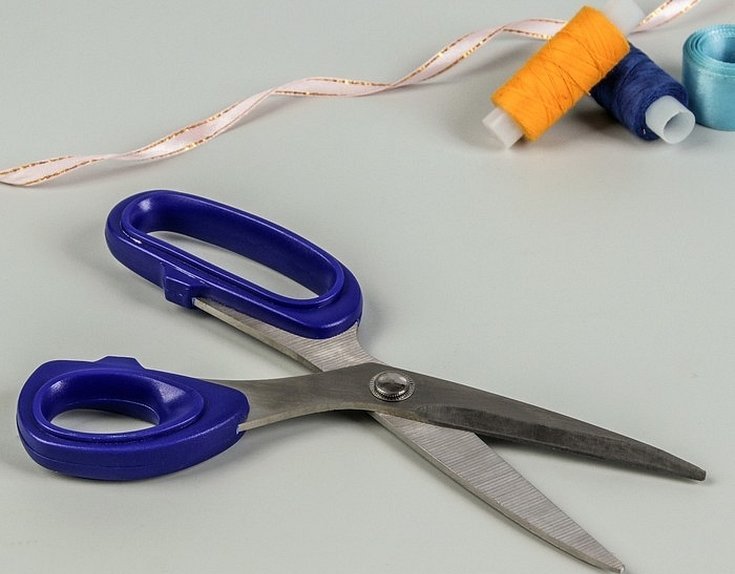
Main types:
- cutting;
- zigzag;
- for handicrafts;
- for embroidery;
- universal;
- for the harness and bandage section;
- instruments with a plier at the end.
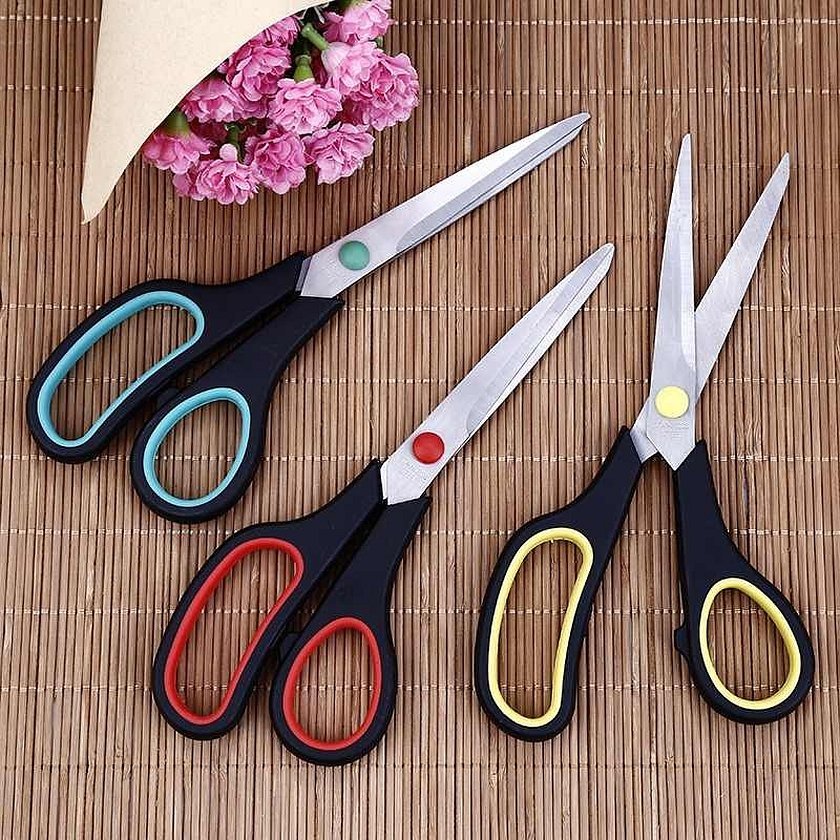
How to use
The correct choice of professional sewing scissors affects the quality of the sewing process. An important rule is to use tailor's tools exclusively for fabrics. If they are used for other purposes (not just for sewing), then over time a gap appears between the blades, which worsens the quality of work.
Important! Cutting scissors should never be used to cut materials other than fabric, not even paper.
If you follow these rules, the tool will serve for many years without requiring repair or replacement.

Choosing the Right Scissors
The better the tool, the more efficient the sewing process. If a tailor has difficulty cutting a piece of fabric, it means only one thing: the tool is not up to the task.
The size of the scissors that the tailor chooses will be important for the quality of the work. They must be adapted to the specific purpose.
Advice on which professional fabric scissors to buy based on size:
- large (length 24-25 cm and longer) - for cutting longer sections and many layers of materials at the same time;
- smaller size: for more precise and fine work.
Tips on what sewing tools to choose depending on weight:
- easy options: if you have to cut and work many hours a day;
- Heavy duty forged tailoring tools: to tackle any task in the tailoring workshop.
Without a doubt, good custom options should be comfortable first and foremost, because they are a fundamental part of the tailor's work process. Since there are no comfort marks on the tool, it is best to test them first to make sure they fit well in your hand. Particular attention should be paid to the shape and finish of the handles.
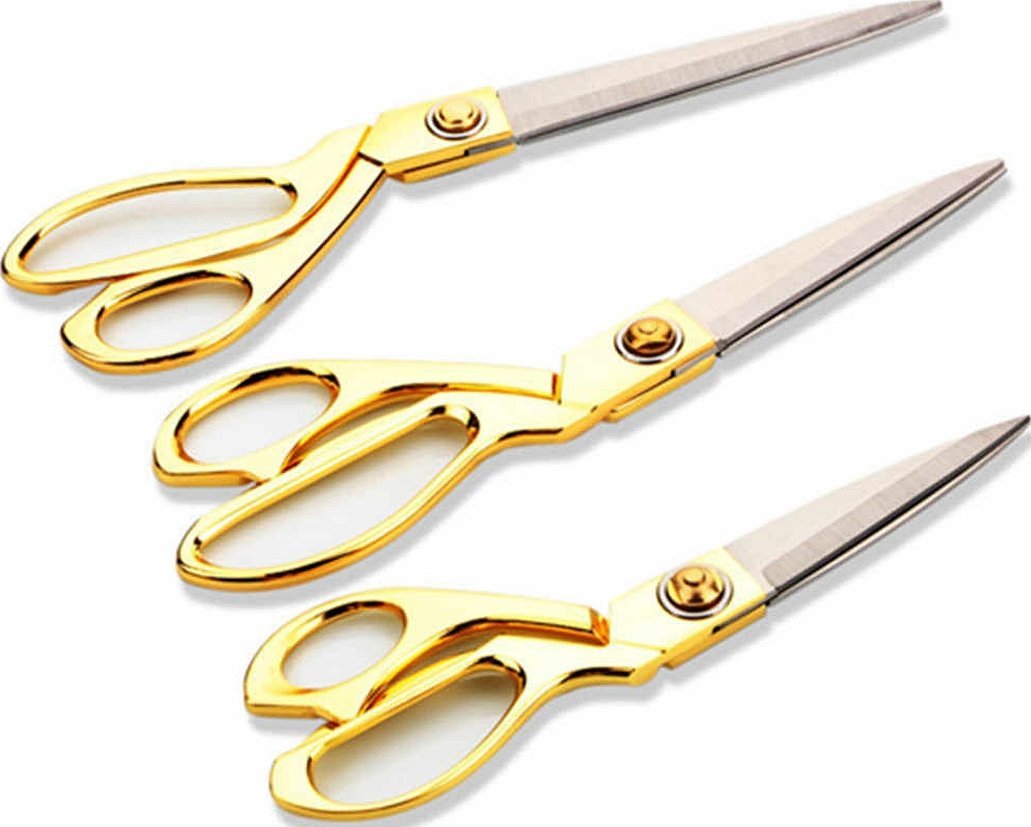
The importance of the blade, its quality, sharpness and shape is of great importance when cutting.
Smooth blades are still the most classic, if only because of their versatility. Leading manufacturers have not forgotten to equip some models with micro-teeth, thanks to which the tools hold even the most delicate fabrics without slipping. However, if you want to trim the edge of the material and protect it from abrasion or simply decorate it, you can choose a zigzag blade.
Tips on how to choose tailor's scissors by blade shape:
- models with smooth blades for universal work
- models with micro teeth, if the tailor is going to cut a lot of delicate materials that tend to slip and “run away” from the blade;
- zigzag options if the tailor wants to protect the edge of the material from wear or to decorate it.
How to sharpen scissors
It is impossible to sharpen real professional scissors on your own. It is better to contact a specialized workshop that has a special machine.
Important! Using “folk” sharpening methods can ruin the blades completely, which will lead to the need to buy new tools.
To check the correct sharpening:
- it is enough to take a piece of very thin fabric (for example, chiffon);
- cut the fabric into one layer along the hem, cross, oblique lines and in circles;
- tools should cut easily with a blade in any direction without jamming the fabric;
- The tool should also cut the fabric easily at the tips.
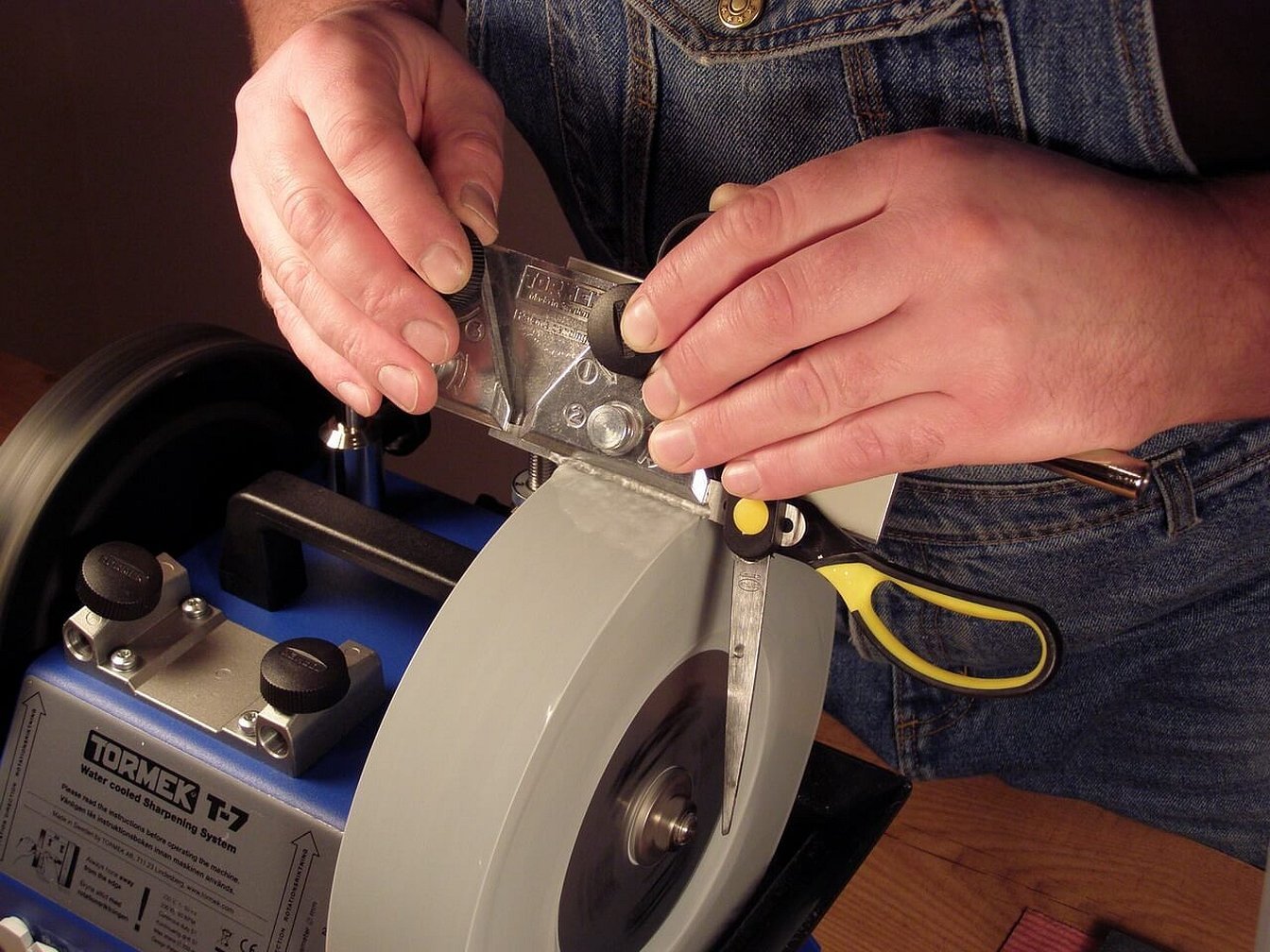
How to monitor the mounting screw
The fastening screw on tailor's scissors plays a very important role in the quality of fabric cutting. It is necessary:
- monitor the condition of the screw;
- clean it;
- lubricate the unit;
- tighten from time to time.
Important! There are some models that have a rivet instead of a screw. In this case, it will not be possible to disassemble it or tighten it. Only a special master can do this.
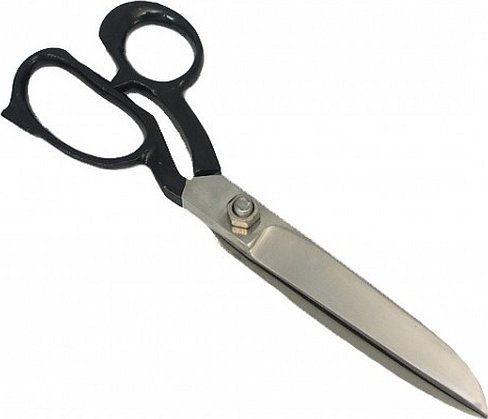
How many scissors do you need to have?
The most ideal option is to have your own scissors of the appropriate size and shape for each type of fabric.
Important! A seamstress's arsenal should include 4-5 different types of tools.
Most often, universal medium-sized options are used.
Possible list of scissors to use:
- small and very sharp (you can use the manicure version) - for cutting threads;
- with long blades - for embroidery;
- for drape fabrics, leather, suede: zigzag;
- for fur and leather - special options.
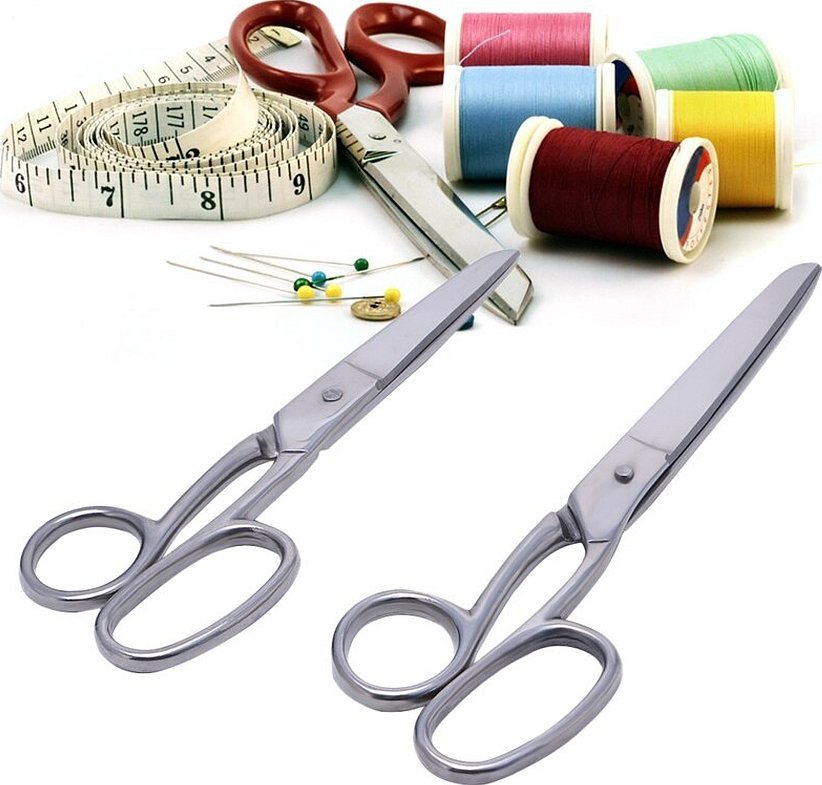
How to take care of it properly
In order for the scissors to serve you for a long time and correctly, you need to follow several tips for caring for them:
- should be used strictly as directed;
- A mark should be made on tailor's scissors to avoid the temptation for others to use them to cut other materials, which would cause damage;
- rubbing with alcohol;
- sharpen only with a specialized craftsman, preferably using a laser;
- must be stored in a dry place;
- blades must be kept dry;
- It is not recommended to cut fabrics in several layers;
- different types of fabric require different scissors;
- For multi-layered and thick fabrics, it is better to use special cutters.
Possible reasons why the tool cuts poorly:
- loss of sharpness;
- misuse;
- loose screw.

Review of the best professional scissors
According to the 2019 rating, the best professional tailor's scissors are as follows:
- SCHMETZ 20 CM 82020. The model has a curved shape, the small ring is raised up. The design is angular, which is convenient when cutting on a straight surface. Length - 20 cm. Material: high-quality stainless steel. Price from 1,500 rubles. * Among the disadvantages, they note the lack of a storage case.
- KRETZER FINNY 72024. Suitable for cutting any type of fabric. Manufacturer: Germany. High-quality material. Positive aspects are: no slipping and durability. Disadvantages noted: high price level. Price from 2300 rubles.*
- GAMMA G-301. Made in Russia. Length - 25 cm. Material: strong steel, which makes them heavy in the hand. Self-sharpening. Disadvantages: you can't drop them or cut anything else. Price from 400 rubles.*
- AURORA 23CM AU905-95. At the end of the blade there is a steel ball, providing protection against puncture. The tool is designed for working with very delicate fabrics. Blade thickness: 3 mm. Length - 23 cm. Price from 500 rubles.* Disadvantages: the stroke is not adjustable.
Thus, sewing scissors can last a lifetime if the tailor makes the right purchase of the model and carefully monitors their use and storage. The first thing to look for is the ability to cut the fibers neatly, and not chew them. The scissors should grab the fabric, and not push it away from the blade, as this can lead to accidental cutting and distortion of parts of the design.
The most distinctive feature of sewing scissors, as opposed to regular scissors, is the angle of the handle. The side bend allows you to cut along the surface of the table without lifting the fabric, giving a more precise cut. Traditionally, tailor's scissors are made of any metal material, but technological developments have introduced plastic handles, which make them lighter and more convenient to use.
*Prices are valid as of August 2019.




